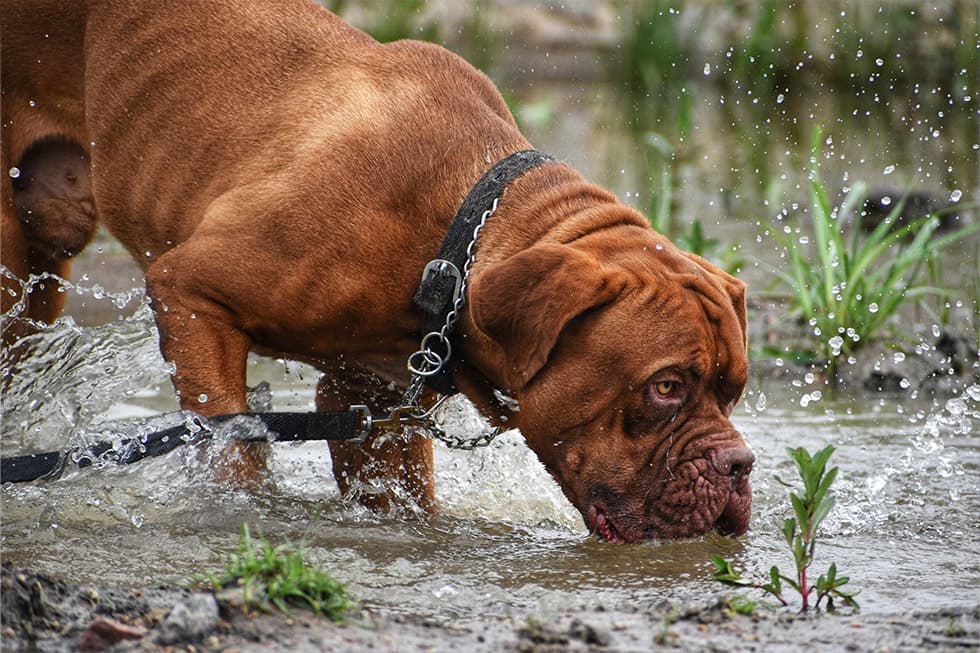Sydney's Severe Weather: Is Your Dog at Risk from a Hidden Leptospirosis Threat?

Sydney, Australia – The relentless rain and sudden flash floods hitting the city are more than just an inconvenience; they're a serious call to action for every single pet owner. As the water levels rise, so do the hidden dangers to our furry companions, from a spike in a nasty bacterial disease called Leptospirosis to a whole host of physical hazards.
It’s a tough situation. I’ve seen firsthand how a fun-loving dog can go from happily splashing in a puddle one minute to being seriously ill the next. With these unprecedented downpours, the risks for pets are multiplying fast. We're not just talking about the obvious threat of fast-moving water, but also the unseen dangers like overflowing drains and sharp debris lurking in the mud that can injure an animal in a heartbeat.
Leptospirosis: The Invisible Threat in the Water
So, what’s the deal with Leptospirosis? It's a seriously nasty bacterial infection often spread through the urine of rodents like rats. When it rains heavily, this contamination gets washed into puddles, ponds, and floodwaters—basically, everywhere your dog might be tempted to drink or play.
It's a scary thought, isn't it? Many of us don't think twice about our dog slurping from a puddle on a walk. But after a deluge, any standing water can become a breeding ground for this bacteria. I remember a case with a client's young spaniel who contracted it from a seemingly harmless puddle in their own backyard. It was a shocking reminder that the danger can be literally on our doorstep. That’s why pet health experts are urging owners, particularly if you're in a high-risk or flood-prone part of Sydney, to have a chat with their vet about the Leptospirosis vaccine. It’s a safe and highly effective preventative measure. For now, please, keep your pets from playing or running through any floodwaters or puddles.
Beyond Bacteria: The Physical Dangers of Floods
Shifting gears from the microscopic threats, the floodwaters themselves are a major hazard. It’s easy to underestimate the power of moving water.
Imagine this: a current that looks shallow can easily knock a small or even medium-sized dog off its paws and sweep it away. Overflowing stormwater drains create powerful, hidden suctions that can be fatal. And what about the murky water itself? It could be hiding anything from broken glass and sharp metal to chemical spills and electrical hazards from downed lines. It’s absolutely critical to keep your pets on a tight leash and far away from flooded parks, drainage channels, and any fast-moving water.
Practical Safety Steps for Worried Pet Parents
Alright, what can you do right now to keep your dog safe? Here's the scoop on practical, immediate actions you can take.
- Leash is your best friend: Stick strictly to on-leash walks until the weather clears and the water recedes. Avoid all flooded paths, creeks, and parks.
- No puddle-sipping: Actively prevent your dog from drinking from puddles, gutters, or any standing water. Bring fresh water with you on walks.
- Keep your yard clean: Ensure your property is free of leftover food or rubbish that might attract rodents, the primary carriers of Leptospirosis.
- Call in the pros: If you think you have a rat problem at home, don't wait. Contact a professional pest control service immediately.
- Talk to your vet: This is the big one. Have a proactive conversation with your veterinarian about the Leptospirosis vaccination and your dog’s specific risk level.
Knowing the Symptoms of Leptospirosis
Even with the tightest precautions, it pays to know the warning signs. If your dog has been anywhere near floodwater and starts showing these symptoms, you need to see a vet, pronto.
- Sudden fever, shivering, or appearing chilled
- Obvious muscle tenderness or stiffness when moving
- Extreme tiredness and lack of energy (lethargy)
- Vomiting or diarrhea
- A complete loss of interest in food
- Drinking or urinating much more than usual
- Trouble breathing
- Gums or the inside of the nostrils looking dark red
Here's the key takeaway: because the symptoms of Leptospirosis can look like so many other common illnesses, you must tell your vet your dog was exposed to floodwater. They need that crucial piece of information to run the right diagnostic tests. Delaying treatment can have devastating consequences.
Stay Sharp, Keep Them Safe
The bottom line? During extreme weather events like this, our vigilance is our pets' strongest shield. Prevention is everything. Please use extra caution around any standing or moving water, and never underestimate how quickly a dangerous situation can develop. Being informed and prepared is the most powerful tool you have to protect your beloved dog's life.